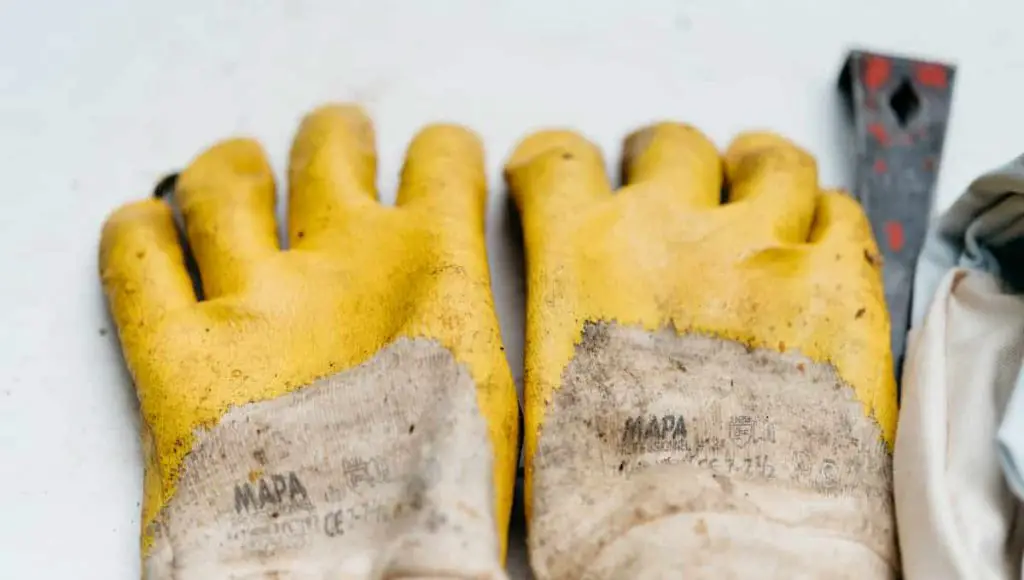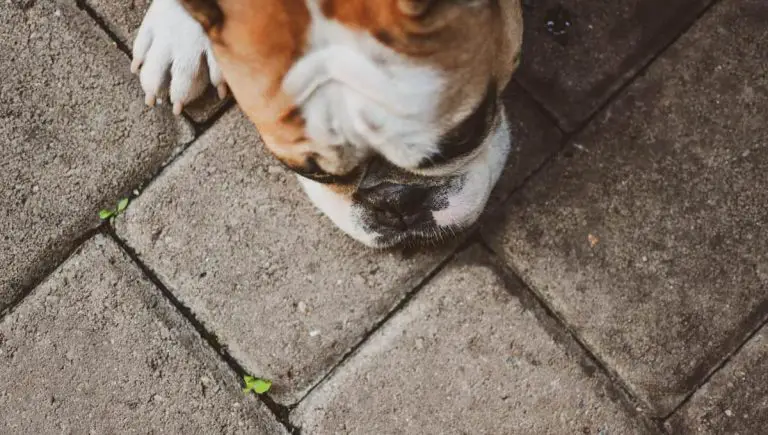How to Bury a Dog In the Winter: The Definitive Guide

There’s really no preparing for the loss of a pet, and there’s no good time to deal with it as well. But what if it happens in winter? It is not unusual for dog owners to experience a tragic loss in winter. What’s worse is having to wait for days, weeks, or months to bury the dog during winter when the ground is frozen solid. So if you’re experiencing this dilemma, you would want to learn how to bury a dog in the winter and if it is possible or not.
There may be other methods of taking care of a beloved pet’s final arrangements. Dog owners can choose cremation, taxidermy, and mummification, but burying a pet in the ground is a traditional and much more meaningful method used especially by people who own land.
To bury a pet, you may need to consider where you can bury, how to bury in frozen ground, and some tips and tricks on how to give a proper resting ground for your beloved pet in winter.
Are You Allowed To Bury Your Dog On Your Property?
Not only will you be dealing with the heartbreak that comes with the death of your dog, but you might also be confused about preparing for the burial. Is it even legal to dig a grave in your own land to bury a pet?
Do understand that the laws on proper disposal of your pet, even if it means burying it on your property, may differ by states, country or municipality. Before you proceed with burying your dog on your own land, you should research and understand the laws pertaining to it.
How to Bury a Dog In Frozen Ground
The need to bury a dog in winter is understandable as it can be more painful to wait longer until the weather warms up. Many pet owners would recommend keeping a dead dog in a freezer until spring when the ground will soften and become more suitable for digging. However, that option will only prolong the dog owner’s misery.
There is another option, which is to dig through the frozen ground, with the help of some equipment and techniques. So, can you dig in frozen ground? The short answer is yes, but aside from the need for more tools and equipment, it might also take more time to complete the project.
The frozen ground will delay the process of digging to days instead of just hours. Here are two options you can choose from when preparing for your dog’s burial.
- Jackhammer – they can be noisy, but they do the work. Perhaps you may have used one before while digging an icy ground. This equipment can easily break up the ground, making it easy for you to dig.
The good thing about having to think about breaking the ground with a jackhammer is that you don’t need to do much work since you’ll only need a shallow grave.
- Ground thawing blanket is one of the latest technologies you can use to help with winter burial. We will discuss more on ground thawing blankets in the next section.
Once the ground has thawed or broken up, you can proceed with the digging. Note that you may need to have a pet grave that is at least three feet deep for health reasons.
You don’t want the burial site to be dug up by scavengers or other pets. You also need it deep enough that the rain won’t be able to wash away the topsoil and expose the remains.
Using Ground Thawing Blankets
Ground thawing blankets are specifically designed to thaw frozen ground in just hours. This is convenient for professional diggers, but it can benefit homeowners as well, especially those who have to inevitably deal with burying their pets during winter.
The use of ground thawing blankets has become popular in recent years because of its reliability and ease of use. The blanket is simply left on the ground for several hours (usually 12-18 hours) before digging.
Depending on how deep the frost is or if the conditions are favorable, a ground thawing blanket is able to thaw 10 inches deep every 4-5 hours.
Freezing A Pet’s Body
Freezing a pet’s body is one of the most common things pet owners do in winter, especially when digging through the frozen ground cannot be done.
If you can’t thaw the ground at the moment, such as in instances where you still need to wait longer or there is a blizzard in your area, then the best approach would be to freeze your pet.
If you find yourself with no choice but to do this, here are some tips:
- Freezing your dog should be done within 24 hours after their death.
- Use a towel to wrap around a pet, then place the body inside a bag and into the freezer.
- Use double plastics if you must, or even an airtight container to make sure your dog is sealed inside.
- Take out food from the freezer to avoid contamination.
- Better yet, if you have a separate freezer in your garage, you can use this.
Tips on Burying a Dog In Winter

Now that you know some of the options on how to dig a frozen ground, it’s time to make burial preparations:
Check local Laws on Digging a Grave
The first step is to call the utility office in your area and inform them of your plan. Ask them to pay you a visit to mark your yard. You don’t want to dig on the ground and risk breaking a gas line with your equipment.
You also don’t want to dig a spot near running water. Depending on where you live, you always need to contact the office to check the laws before proceeding.
Handling Your Deceased Pet
Once your dog has passed away, you need to place the body in a plastic sheet or any waterproof material you can use. You may also use a big blanket or towel to wrap around your dog or double up on plastic bags.
Keep in mind that bodily fluids can still come out of the animal’s body minutes after their death. The fluids can leak again when the body is disturbed such as moving it from one place to the grave site.
If you have other dogs in your home, it helps to let them see your deceased dog. This way, the others in the pack will know what happened instead of leaving them wondering about where the dog had gone.
You also need to wait 2-3 hours for rigor mortis to set in after your pet’s death before you can proceed with the burial. This is to ensure that your pet has really died.
Don’t forget to wear protective gear when handling a pet’s remains, especially since you will need to maneuver your dog to the right position for burial. Positioning your dog properly gives it a sense of peace and helps you bury the remains easily.
In case you can’t bury your dog immediately or you need time to wait things out, place the remains in a refrigerator or freezer until you’re ready. If this is not feasible, contact your vet to help you store the remains.
Where Not To Bury
Burying your dog on your property may or may not be legal, depending on the laws, but there are places that you certainly don’t want to turn into a burial site.
If you don’t own your property (or you are simply renting the land), you can’t bury your dog. Also, you can’t and shouldn’t go to a park to bury your dog.
Things To Consider When Burying Your Dog In Winter
If you have a small dog, it is easier to handle them. You can simply fit them in a cardboard box or a small coffin. Others would even use fancy decorations for that proper send-off. If you have a larger breed, you can have a coffin customized for its size. Keep in mind that handling a large dog may be a two-person job.
There are also caskets beautifully handcrafted for beloved pets, like this Paws Rest Premium Pet Casket from Jannik or this elegant Pet Memory Shop Pet Casket. If you want it extra special for your pet, making sure you’re sending them off in a dignified way, then buying premium ready-made caskets can be a great idea.
When choosing a burial spot within your property, make sure to choose one that doesn’t always get wet. You can choose a beautiful spot in the garden that you can easily decorate. Avoid any areas that will likely be excavated in the future. In addition, the spot shouldn’t be an area where scavenging animals will possibly frequent.
More importantly, your burial site should be located far away from water sources such as ponds or wells. If you have contacted the utility office as previously mentioned, you should be able to find a spot that doesn’t disturb underground cables or pipes.
The Burial
You can always hold a funeral service if you wish to give closure to family members who are grieving. If you have children who are showing interest in participating in the service, let them. You can encourage them to write letters or make cards for the deceased beloved pet.
Saying goodbye to a pet will not be easy but at least you can take comfort in the fact that everyone wants to remember him/her in a good way. You can even let people take photos or videos of the event while sharing words of comfort and wonderful stories about your dog.
If you want to be left alone with your dog for the last time, allow yourself. Go and pet your beloved dog and just share your heartfelt sentiments.
Once the burial is done, you can go on and mark the grave. You can place decorative stones on top of the grave or plant a tree. Decorative stones like this Garden Pet Paw Print Stepping Stone will not only help mark the grave but will also add some appeal to the area.
There’s also the option to put a memorial stone there for your pet. Some are beautifully designed and carry a lovely poem for your beloved furry friend, like this Paw Print Pet Memorial Stone.
For many people, burying their dog is the same as burying a member of the family. It’s not an easy thing to do, but we hope we’ve been able to provide you with the knowledge necessary to do this properly if it takes place in the winter.






